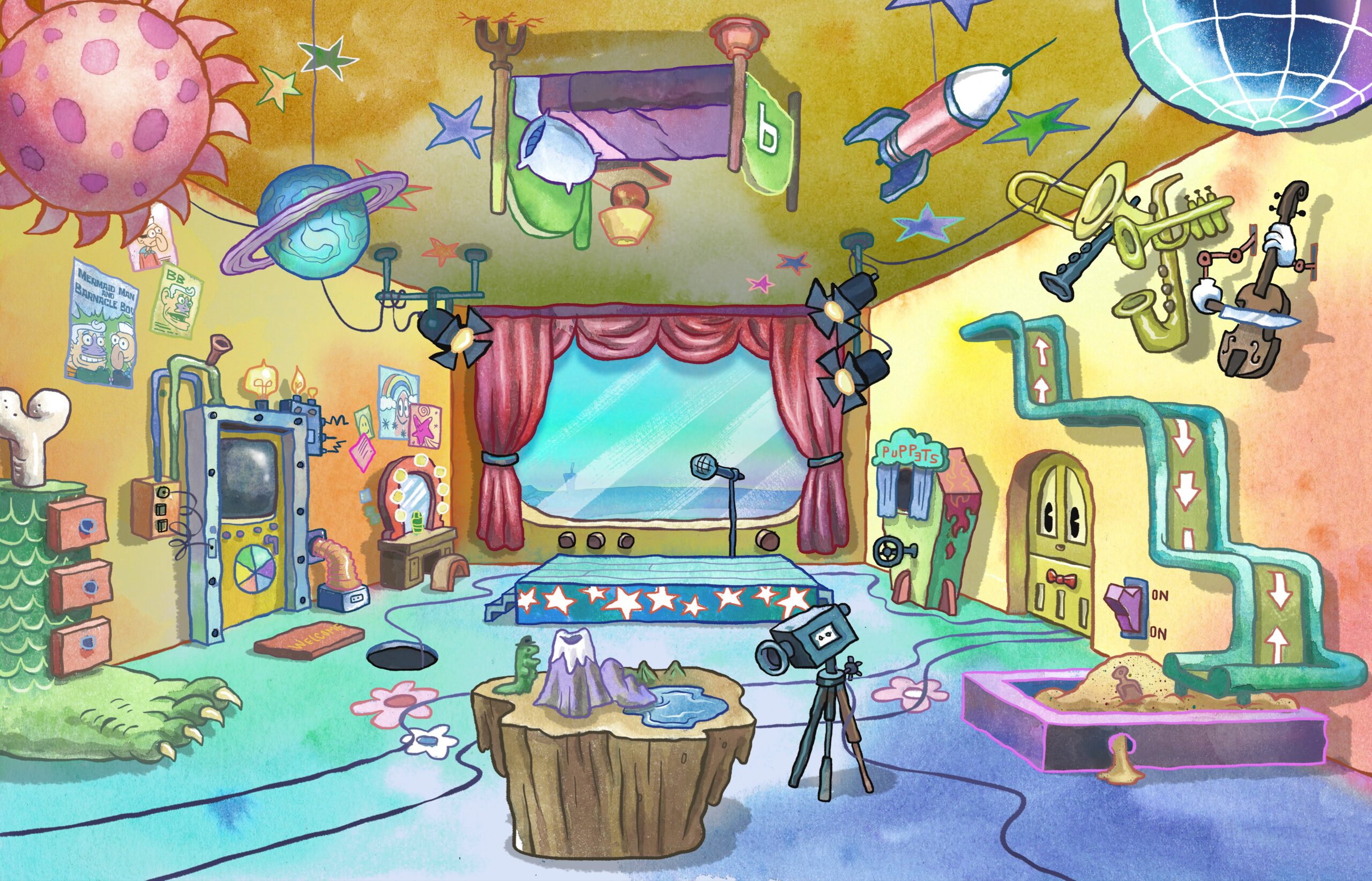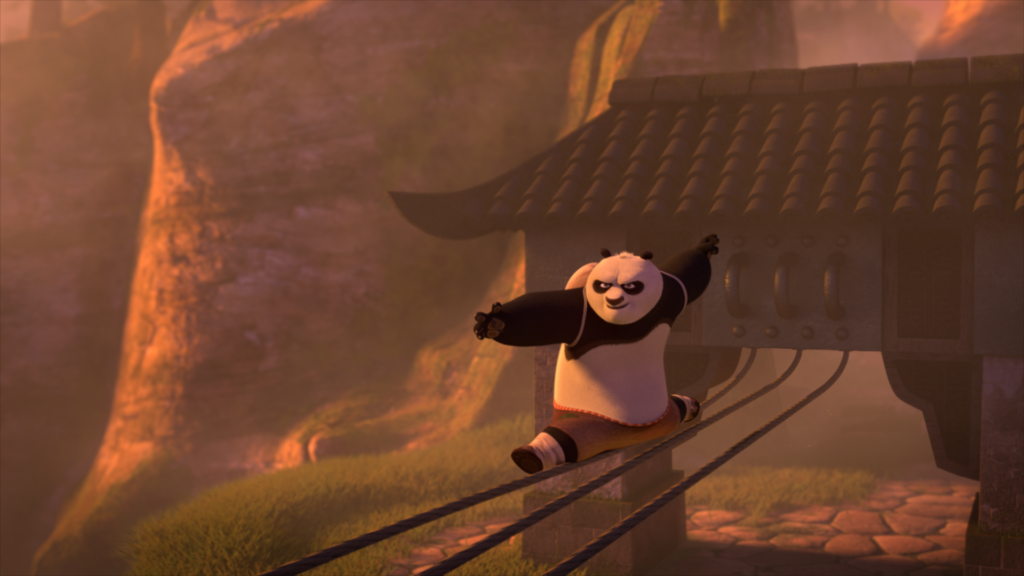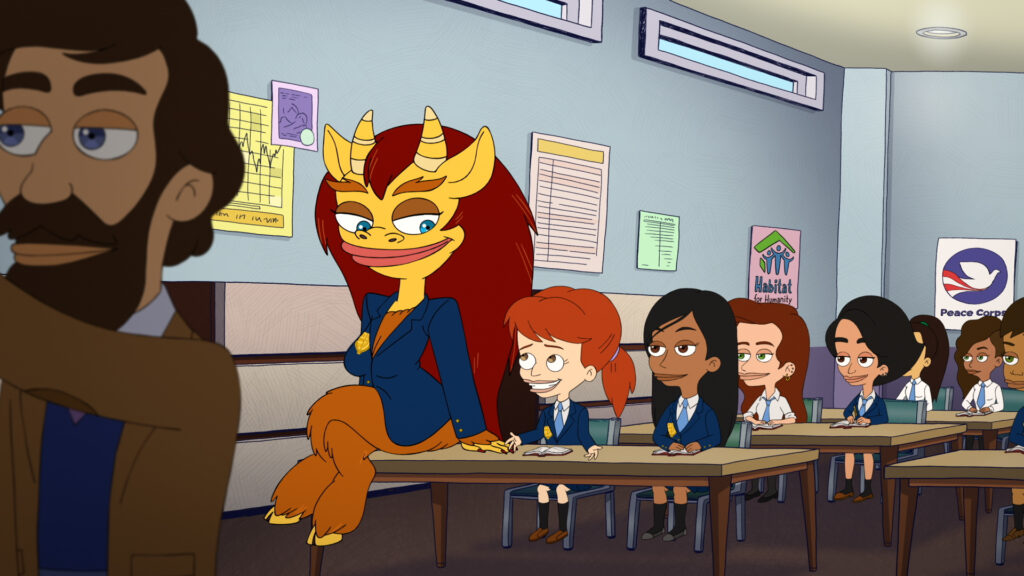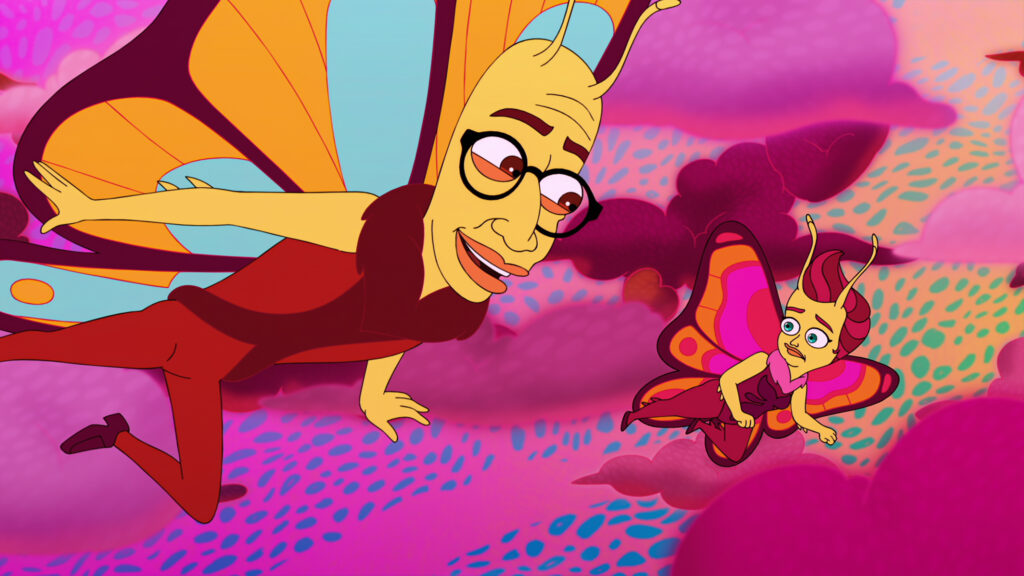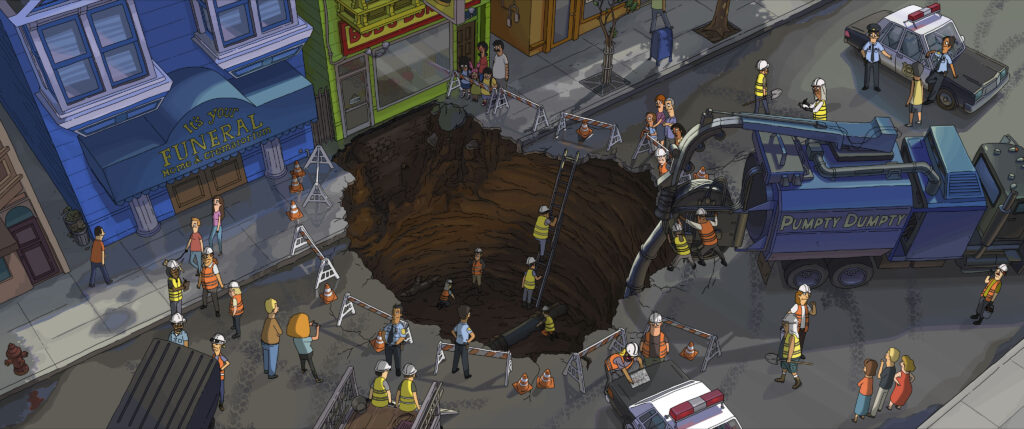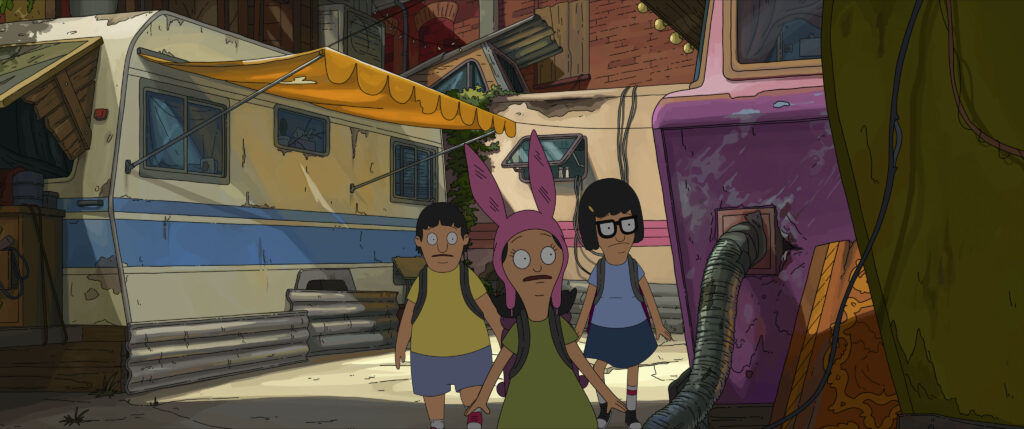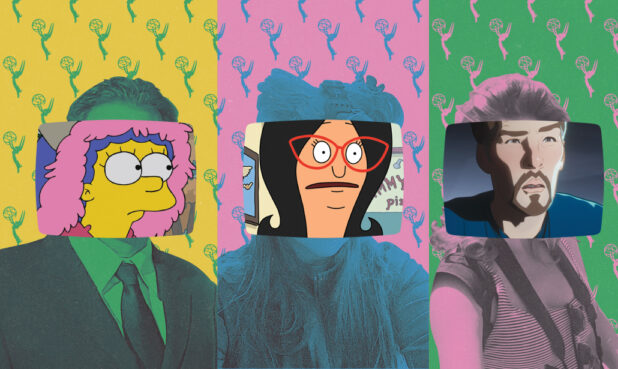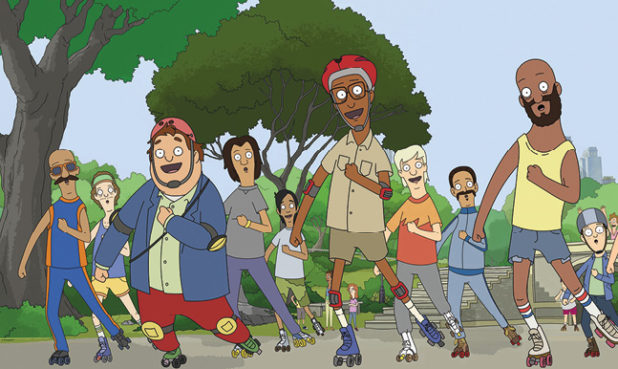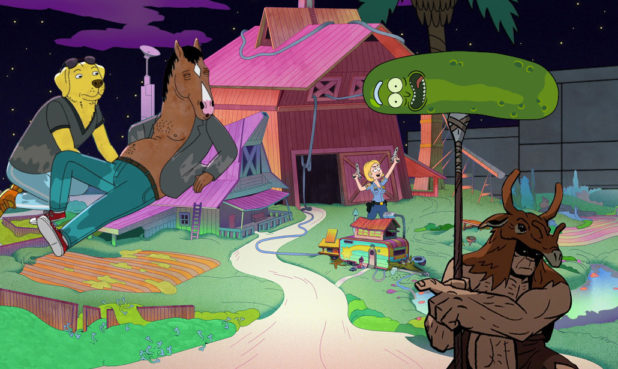To a certain extent, any decision to spin off from a successful animated franchise feels like a no-brainer. You have an established brand with characters, stories, and sensibilities that have proven popular with audiences, sometimes for years on end. With fans expecting new content, why wouldn’t you shake things up by telling a longer story, adding new characters, or building a separate series around supporting characters from the same universe?
On the other hand, cynical viewers have been known to sneer at any attempt to capitalize on an established franchise. “Spin-offs kind of get a bad rap,” says Steven Knudsen, a former Background Artist with the Netflix series Big Mouth who is now the Art Director of its spin-off, Human Resources. “Either it’s too much the same as the original, so it feels like a bit of a cash grab, or it’s too different and it doesn’t feel like it should be connected.”
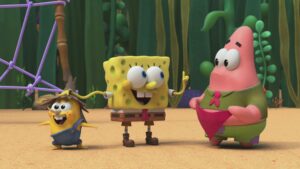
Fresh approaches can lead to new characters and storylines that, if they prove popular, help energize an original show. Look no further than the TV universes generated out of one of Nickelodeon’s most iconic franchises. In the prequel spin-off Kamp Koral: SpongeBob’s Under Years, a 10-year old SpongeBob SquarePants and his underseas pals get the CG treatment and head for summer camp, while the weirdness quotient is ratcheted up in The Patrick Star Show, in which a younger version of SpongeBob’s best friend Patrick hosts his own freeform “TV show” from a television-turned-bedroom attached to his family home.
Co-Executive Producer Marc Ceccarelli points to Nobby and Narlene, breakout characters created for Kamp Koral. Narlene has appeared on SpongeBob SquarePants, and “the cross-pollination has actually made the classic show more interesting and given the writers more tools to play with,” he says. “Any new hook you can have to come up with new ideas, it’s embraced, and it’s great that Nickelodeon allows us to expand this universe and not have it be hermetically sealed. We can try new things with it.”
Narrative structures, for example. The traditional structure of a show like SpongeBob has been jettisoned for The Patrick Star Show. Since the “show” of the title is the product of Patrick’s offbeat brain, writers can mess with the format and play around with different styles of animation.
“The lid is off with that one,” says Co-Executive Producer Vince Waller “With [Patrick’s show] being more of a variety show, the structure allows us to pivot quickly from one idea to the next. It’s kind of liberating.”
Then there’s the possibilities for a new look. Although Kamp Koral isn’t the first time that SpongeBob, Squidward, Patrick, and Co. have been rendered in CG, the notion of building a continuously running series in CG still filled Ceccarelli and Waller with “nothing but trepidation” because, as they noted, “we knew all the limits that were there.” They worried they might get stuck trying to bring life to characters who often look like they’re standing robotically and communicating with tiny mouth movements before they walk to a new place.
Old Meets New
Familiarity and change are both on the menu for the latest TV spin-off of DreamWorks’ Kung Fu Panda franchise. In the upcoming Kung Fu Panda: The Dragon Knight TV series, show creators expand the realm of 15th century China to introduce characters from different nations. Among them are weasels Klaus and Veruca Dumont and hero Po’s quest partner, Wandering Blade, a knight who hails from England. Since Po’s journey may ultimately take him far from home, the Kung Fu Panda team conducted new research, says series Art Director Ellen Jin.
“It was an excellent opportunity for us to go beyond China when it comes to character design,” says Jin. “We could research other cultures and sort of focus on diversity, in terms of the architecture styles and the costumes and weapons that come with characters from other countries. In that sense, we were expanding our world. It was really fun to go a little bit further than what we have seen before.”
Instead, they got the opposite. In a CG show, the producers note, collaboration with the animation team is even closer than it is with traditional 2D board artists. The characters created out of polygons with voices coming out of them go through multiple iterations until they emerge beautifully rendered. “It’s literally like opening a Christmas present,” says Waller. “You just don’t realize how in-depth the look is. Everything is so tactile and so beautiful.”
Although The Dragon Knight harkens back to the look of the original 2008 film in certain ways, the technology has evolved over the past 14 years in both TV and feature animation. Jin points to the advancements in lighting and the ability to do rendering much more quickly. But even with a new adventure and technology, the franchise’s title warrior will not undergo any sort of a visual makeover. “Po hasn’t changed at all,” says Jin. “He might have a little backpack that he wears, but other than that, it’s best to keep his look as original as possible.”
Getting Fresh
Over at Netflix, in an even edgier and adult-ier world, the Lovebugs and Hormone Monsters who have stirred up such trouble among the adolescents of Big Mouth turn their attention in Human Resources to grown-up issues like birth, death, adult relationships and everything in between. In addition, when they were in Big Mouth, the creatures operated in a human world focused on the Bridgeton Middle School kids. In Human Resources, the curtain is pulled back on the daily lives of the creatures, and we see these same characters on the job in their creature realm.
This realm, seen only once in season five of Big Mouth, has weird-looking streets and office buildings that appear to be melting. For Human Resources, “I think we just left the door open for our artists to do whatever they want with neighborhoods and some of the apartments,” says Knudsen. “They’re pretty wild.”
“We always felt that Human Resources didn’t feel like a spin-off. It felt like its own entity from the very beginning,” says series co-creator Jennifer Flackett, speaking at an FYC event for both series. “I don’t think we had any fears like, ‘Oh no, what if we ruin Big Mouth?’ I think we only felt like it will be so fun and interesting to delve into all the different parts of life. That was the nice thing about it. It was Big Mouth, but it also wasn’t Big Mouth. So, we got to enjoy both things completely.”
In her preparation for joining the Human Resources team as an Assistant Director, Kelly Turnbull re-watched all the seasons of Big Mouth. In a career where she has worked on a number of first season shows, Turnbull found it both exciting and comforting to work on one with the “plug-and-play” of how style conventions are handled already in place.
“I’ve worked on shows where you get three episodes into it and they’re like, ‘We want eyelids to work differently than the eyelids did before,’ so everybody has to change all the eyelids in the last three episodes. There were little things like that that were kind of nice to have already taken care of,” says Turnbull. “And some of my favorite things to draw are monsters and body horror, and with Human Resources there was plenty of that.”
New Opportunities
With credits including Shrek 2, Madagascar, and Megamind, Production Designer Ruben Hickman came to The Bob’s Burgers Movie a professed fan of the original TV series, but he was also a newbie to the franchise. “When they first approached me, I said, ‘Are you sure you want me?’” he says. He had been doing CG for the past 16 years. He had done some 2D and traditional painting, but that was nearly two decades earlier. “But I have a deep love of 2D animation,” he says, “so it kind of just pulled me in.”
With a 102-minute story to tell instead of the traditional 22 minutes of a TV series episode, Hickman suspected he would have some room to play around. He was right. Phil Hayes, Art Director for both the series and the film, made certain of that. “It was more about the whole world, the locations, and the cinematography even—how do you use the camera in a bigger way?” says Hickman. “All these things Phil had wanted to try but did not have time to do in the series. So he was excited at the opportunity to do that.”
While the Belcher family doesn’t leave their New Jersey seaside community, thanks to Hickman, Hayes, and the creative team, fans of the series will discover some unique settings in the film. Each of the three children gets a fantasy sequence, and viewers will also delight in Carneyopolis, home to the carnies of Wonder Wharf carnival. In constructing a secret room in Carneyopolis, the animation team went to town with a style that came to be known as carnival baroque.
“It’s sort of this cheap, terrifying version of rococo,” says Hickman. “We had a lot of fun with that. We were able to really draw from that so there’s a lot of cool design work and a lot of cool color and light work in those spaces.”
In seeking balance, Hickman says that they didn’t want to alter the style so much “that it didn’t have that iconic, immediately recognizable quality it has, but we wanted it to see if we could add, for lack of a better term, scope and scale. We wanted to … give it some theatrical cinematic experience. They also wanted to carry a lot of that back to the series, so that was interesting.”
Does that mean the film will leave a mark on the series? “There’s an ice cream machine in the series with teeth marks from an electric shark that was used in the movie. Those teeth marks will stay,” says Hickman. “I haven’t heard how or why. So, the answer is a big yes.”
